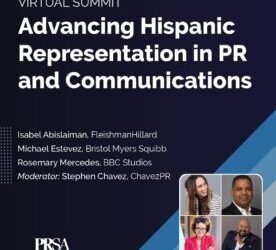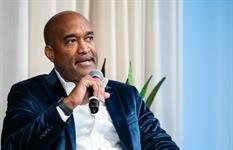It poses a challenge for PR professionals.
Even for trained PR professionals who specialize in understanding news cycles, it can be hard to know who to trust for information. This becomes even more difficult when it comes to regular folks just trying to be informed citizens while going about their daily lives.
But increasingly, Americans don’t trust news sources for that information. They trust their family.

In the 5th annual Disinformation in Society Report from the Institute for Public Relations and Leger, 82% of respondents put some or a lot of trust in family members for getting their news. Following that category, 79% trust people like me and 75% trust friends for getting information and news.
In comparison, the most trusted formal news source is local news at 64%. The most-trusted national news source was ABC News, with 59%. As for AI, that comes in at 34%, a notable jump from 21% last year.
For PR professionals, this poses a difficult problem. While trust is still above-water for many mainstream media sources, increasingly information is passing from person-to-person in a game of telephone. Influence comes not from getting past a gatekeeper at a major news source, but rather by convincing one person at a time, who then in turn convinces others.
Perhaps the most interesting item on the list is the “people like me” category. There is no definition for what this means, so each of the nearly 2,000 respondents could take it in their own way. Does it mean:
- People in my geographic community
- People who share my identity, such as ethnicity, sexual orientation or age
- People who share my political beliefs
- People I like
- People I see on social media
- People I agree with
Each is a valid way of interpreting that question, and each poses a challenge to PR professionals. Other parts of the survey find that, increasingly, people associate “people like me” with people who share their political ideology. We can see this in the breakdown of trust in mainstream media among Republicans versus Democrats.

In every instance, there is a wide gap in trust among Republicans and Democrats. The smallest gap is the Financial Times, with only 13 percentage points between the more trusting liberals and the most skeptical conservatives. CNN and FoxNews, perhaps unsurprisingly, are the most polarizing, with huge gaps between trust from both political parties.
But there is one bright spot when it comes to overall trust in the news: local media. It’s the only item on the list that shows at least 50% trust from both political groups, with 74% of Democrats and 59% of Republicans showing at least some trust in the institutions.
Of course, reaching local media is more difficult as these outlets continue to contract or outright closed. But when leveraged appropriately with highly localized, relevant stories, they can be one of the few remaining ways to foster trust from both the left and the right.
Who is responsible for disinformation?
Seventy percent of Americans say disinformation in the news is a major issue, a jump of 10 points from the previous year. And half of Americans say they encounter misinformation every day – and that’s just what they can believe they can identify.
Blame for this problem is widespread, including on the PR industry. Sixty-one percent of Americans say public relations pros deserve at least some blame for misinformation in society. This is concerning, but that far trails other groups the public believe are responsible.

The blame on social media – notably Facebook, X and TikTok– is particularly complex. First, all three of these networks have pulled back on misinformation policing campaigns in the last year. This ranges from ending independent fact checking to reinstating accounts that were banned for misinformation. Additionally, while social networks have historically borne some of the blame for what is placed on their platforms, they are ultimately made up of other people and groups posting. All the other groups on this list – from the media to governments to PR professionals – use the social platforms as a tool. Social networks are a platform, not a person. When they have decided they aren’t in the content moderation business, they become a mere conduit for whatever disinformation other groups wish to spread.
The other answers on this list might make a PR pro throw their hands up despair. The federal government? Misinformation. Journalists? Misinformation. Major companies? Misinformation. It feels like there’s no way to get information to the public in a way that’s trusted.
But we come full circle. Because if there’s a group the public doesn’t blame for disinformation? It’s themselves, their friends and their family.
Only 12% said their family members were “very responsible” for spreading disinformation, while only 10% each said their friends, their employer or “people like me” spread disinformation.
In other words, the best way to reach people is again with people. With trust in institutions low, influencing individuals becomes the strongest method toward influencing more individuals, whether that’s through paid campaigns with “people like me,” direct organic social or other means.
It’s a difficult environment for building trust. But it still can be done.
Allison Carter is editorial director of PR Daily and Ragan.com. Follow her on LinkedIn.
The post This is who Americans trust most for news (it’s not the media or AI) appeared first on PR Daily.













